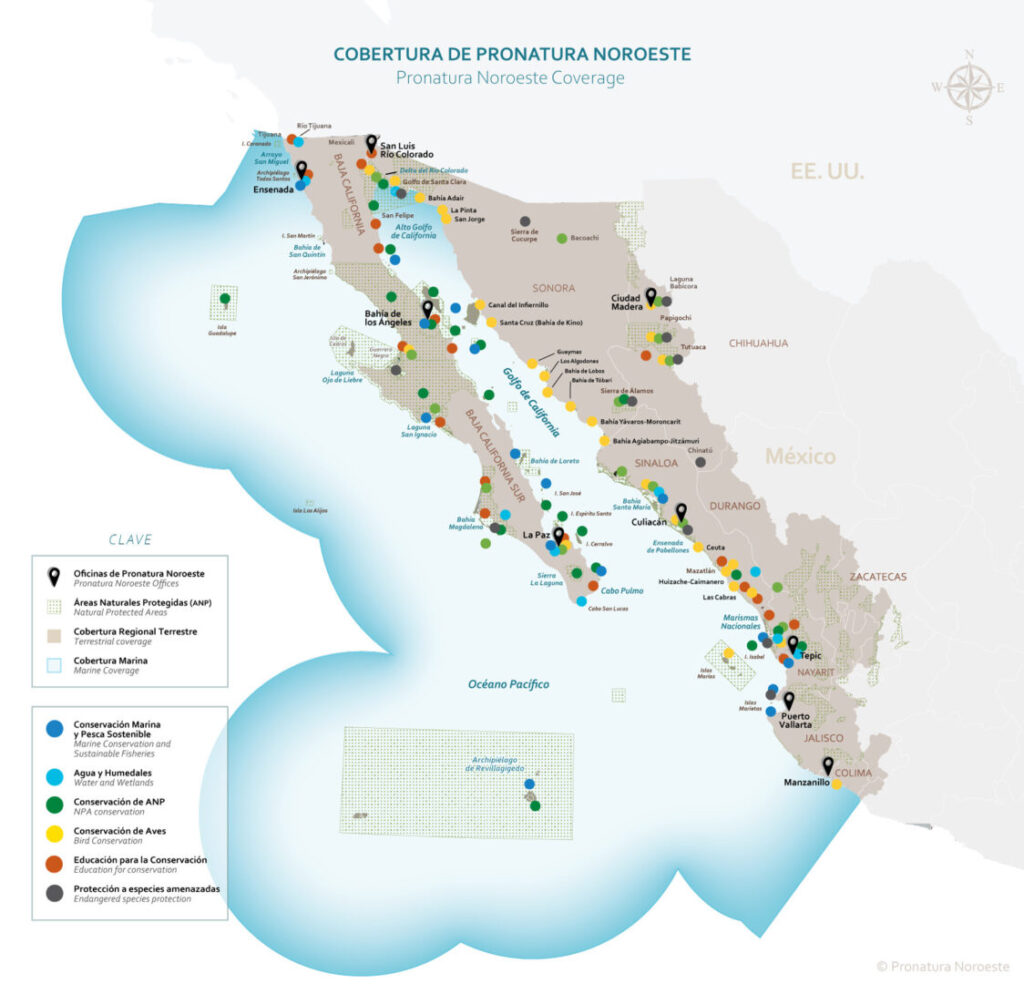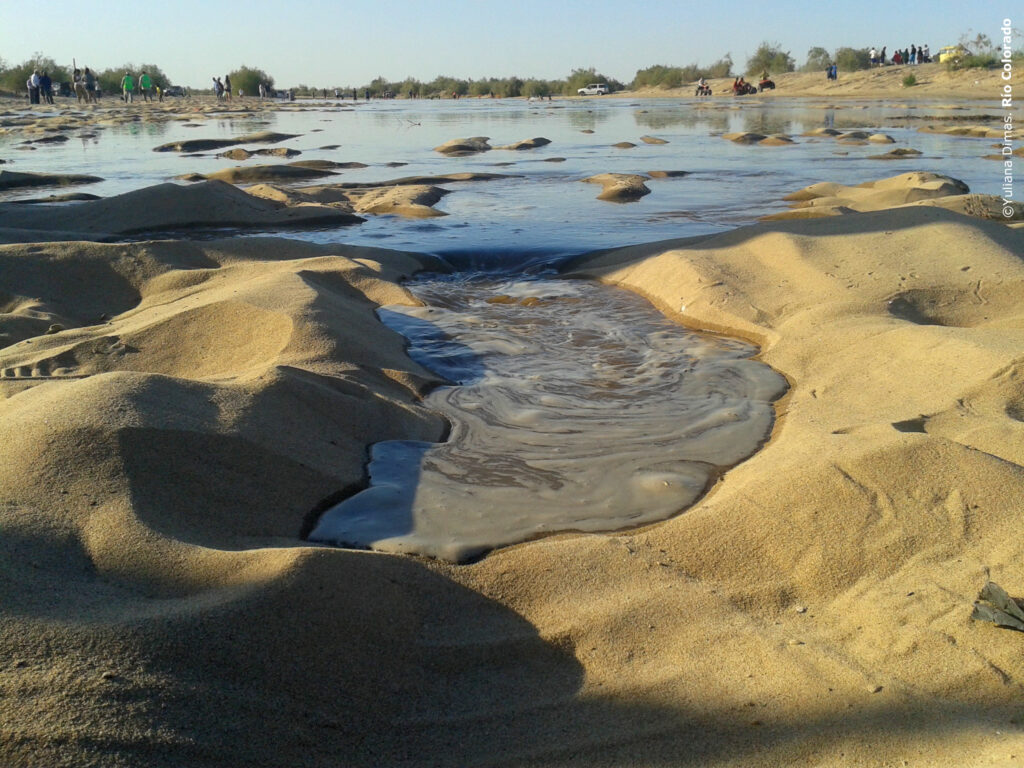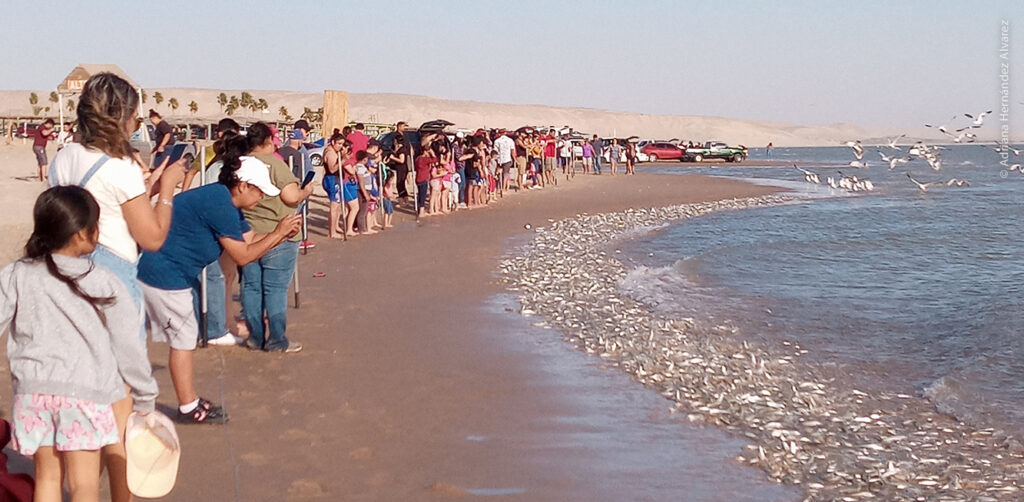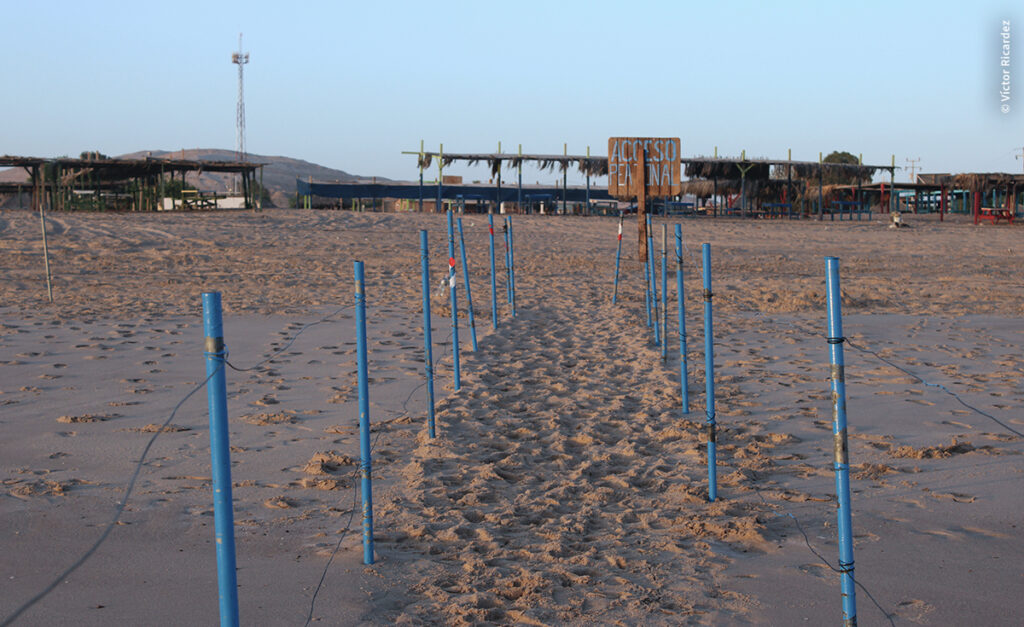It is impossible to think of the sustainable development of a site, a region or a country, without taking into account the conservation of natural capitalTherefore, these two concepts are not only not opposites, but should go hand in hand, he said. Gustavo D. Danemannby participating as a guest in Voices from the Sea of Cortez.
The Executive Director of Pronatura Noroeste AC presented the subject Development and Prosperity in Harmony with Nature before the audience that attended the invitation of Sea of Cortez Forum.
In his presentation, the Marine Biologist highlighted the mission of Pronatura Noroeste is the conservation of the flora, fauna and priority ecosystems of northwest Mexico. Mexicoto promote the development of society in harmony with nature.
"This mission already incorporates these two concepts that are sometimes presented as opposing concepts: conservation and development, since it is impossible to think about the sustainable development of a site, a region or even a country without considering the conservation of the natural capital of that site, that region or that country," he said.
That concept is something that fishermen do not understand in practice, he said.
And he knows this because in interviews he has conducted with them, they understand the importance of taking advantage of fishery resources, but without using them up.
"They were basically talking about sustainability and any rancher who is in the chicken business knows that if he has a hen house he can take advantage of the chickens, the eggs, but you have to keep, now yes, hens and roosters. It is the natural capital and what we are taking advantage of are those dividends, those interests", he said.
What does Pronatura Noroeste do?
Founded in 1991 by people such as Mr. Enrique Hambleton, Mr. Gastón Luken Aguilar, Mr. Jaime Roberts Vildósola, José Antonio Díaz Quintanar, Sergio Escutia Zúñigaamong others, Pronatura Noroeste AC addresses issues in three main groups, Danemann said.
- Projects that conserve habitat.
- Projects focused on threatened species within these habitats.
- Economic sustainability projects, especially fisheries sustainability issues.
This is the basis for this organization, which has a presence in Sonora, Sinaloa, Nayarit, Jalisco, Colima, Baja California y Baja California Surand the western slopes of Chihuahua y Durangohas sought to work with many, many partners throughout the region on different projects, he explained.

Restoration of the Colorado River delta
Gustavo D. Danemann narrated a series of projects and actions in which he Pronatura Noroeste has participated, highlighting the work that has been done on the Colorado River Deltaone of the most managed and exploited rivers in the world. There, it was possible to convert a portion of the Mexicali Valley in a forest.
He explained that, in 2010, through the Act 306the conceptual framework of the delta restorationand in 2014, with the Act 319130 million cubic meters of water were released into the Colorado River, in what was called the pulse flow.

This pulse flowaccompanied later by a permanent flow of lower intensity, allowed to revert a reduction in the number of plants in the plant biomasswho was already 13 years old, he said.
"More and more plant biomass was being lost, and during the period when it was flooded, an increase of 43% was achieved, and along with the plant biomass, that is, the trees and plants of the site, an increase of 42% was also observed in the diversity of birds that used the area," he said.
The Executive Director of Pronatura Noroeste He clarified that this work was not simply a case of pouring water and seeing what would happen, but required a lot of study, a lot of engineering, a lot of science and a lot of effort.
"In total, 135 hectares of what used to be the Colorado River delta were restored, and the most interesting thing is that most of this work was done by local volunteers," he said.

There is currently a proposal for the creation of a state reserve of 32,000 hectares that would cover a large part of the entire riverbed. Colorado Riverwith all the expected environmental and social benefits, he said.
The land of the silverside and red shore shorebirds
From the hand of Pronatura Noroestea group of women from the Gulf of Santa Clara have been devoting their efforts in recent years to protect two emblematic species of this region of the world. Upper Gulf of California.
They call themselves Las Pejerreynasbecause they protect the silversidean endemic species that is also vital for the reddish sandpipera kind of migratory bird which arrives in the region in spring on its way back to Canada after wintering in some areas of northwestern Mexico.
Gustavo D. Danemann explained that, during the spring high tides, the silverside lays its eggs on the beach, so that at the next high tide, when the water returns, the eggs hatch and the fry return to their environment.

"This is when the migratory birds arrive, particularly the red shorebird, to feed on the billions of eggs left by the silverside on the beach. More than half of the world's population of this species stops there in the spring in Golfo de Santa Clara", he emphasized.
The Marine Biologist exposed that the problem is that at Easter, Gulf of Santa Clara becomes the tourist destination The preferred method of transport for tens of thousands of tourists and thousands of vehicles is to park directly on the sand, causing the death of hundreds of birds and even people run over.
"This concerned a group of women who formed a group called Las Pejerreinas de Golfo de Santa Clara and we worked together with them, as local volunteers, to establish a fence that would limit the passage of people to the most important silverside spawning and feeding areas for these migratory birds," she said.

The fence was set up with a lot of work and was guarded by the women volunteers during the days when there was a high influx of tourists, which made it possible to almost completely reduce the disturbance to these critical areas for migratory birds, said Danemann.
Now, the inhabitants, proud of what they have, are calling on Gulf of Santa Clarathe land of the silverside and red shore shorebirds.

Shared dreams and visions
During his presentation, Danemann highlighted that Pronatura Noroeste y Sea of Cortez Forum have many things in common, as they share not only current board members and founders, but also a wonderful region and a vision for its development.
"For Pronatura Noroeste it would be a great satisfaction, an honor, to be able to collaborate with the Forum in the implementation of environmental projects that allow us to promote the prosperity and economic and social development of the Sea of Cortez Region in a sustainable manner and in harmony with nature," he said.
During the event of Voices from the Sea of CortezThe audience participated with questions, project ideas and suggestions aimed at achieving a balance between the economic and social development of the region, while respecting the environment.
Projects in which Pronatura Noroeste plays a role
- Restoration of one and a half kilometers of the Tijuana riverbed
- Establishment of the first natural protected area of the Arroyo San Miguel State Park in Baja California, which preserves 6 kilometers of the last remaining natural stream in the urban area of Ensenada.
- Decree of 1,275 hectares as a Municipal Reserve Playa Ceuta, in Sinaloa, where 12% of the world population of the snowy plover nests.
- Management to decree the Laguna de Cuyutlán State Park, in Colima, as a state protected area.
- La Poza private nature reserve, in the lagoon complex of Magdalena Bay, Baja California Sur.


